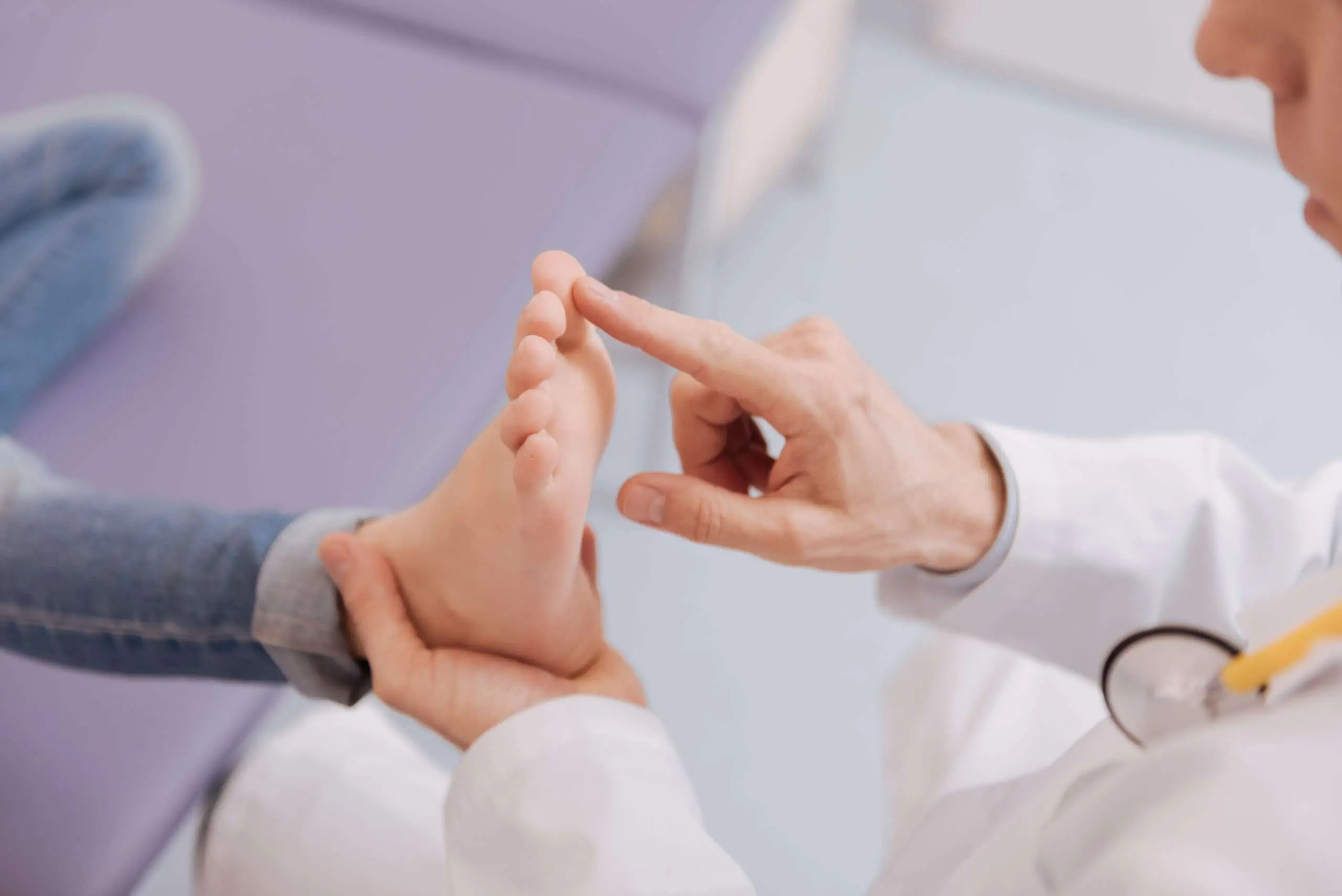
It can be difficult to distinguish between a problematic and a healthy foot in a growing child.
Early detection, on the other hand, allows the podiatrist to react more quickly before the foot takes its final shape.
As a result, the prescribed treatments can be more effective.
This article will cover some of the podopediatric treatments available for children’s foot pain.
A full diagnosis
Before prescribing any treatment, the podiatrist must ensure that they have a thorough understanding of the child’s pathology.
They do this by using a variety of analysis techniques, including:
- The biomechanical exam
- The postural assessment
- A digital X-ray of the feet
- Digital impressions in 2D and 3D
The podiatrist will observe the impact of the feet on the child’s whole body using the aforementioned techniques.
As a result, a child’s evaluation allows for the detection of postural abnormalities and imbalances that could be causing discomfort.
Children’s foot orthoses
Children’s orthotics can be worn starting at the age of three as part of podiatric treatment.
Unlike other adult foot orthoses, however, these must be tailored to the different stages of a child’s development.
They can be used to treat a variety of issues, including:
- Flat feet
- Feet that point inward or outward
- Knees in “X”
- Arched legs
- Heel pain, such as Sever’s disease
- Ankles that are unstable and cause frequent falls
The podiatrist is likely to discover that the child has trouble properly mobilizing their lower limbs after this examination.
They will most certainly recommend orthotics to realign the toddler’s legs and feet if this is the case.
If the gait is oriented too much inward, for example, an additional change in the orthotics may be added to allow the leg to rotate outward during propulsion.
Splints
When a leg or foot has to be immobilized for an extended period of time, a splint is the go-to tool in podopediatrics.
The splint relieves the pain of fractures, sprains, and tendinitis in adults.
It’s more likely that the splint would be used to correct a clubfoot in younger patients.
Clubfoot is a plantar defect that makes the ankle and foot curve inward. There are two types of clubfoot: real clubfoot and positional clubfoot.
The wrong placement of the unborn child in the womb is what causes positional clubfoot. The treatment for that would be to immobilize the foot with splints.
Meanwhile, true clubfoot is a congenital deformity of the foot caused by underdevelopment of the bone and muscle structures. It is also treated with immobilization, but can possibly necessitate surgery as well.
The splint is used as a follow-up treatment after surgery or the removal of a cast to correct clubfoot.
This successful therapeutic technique is used to hold the feet in the desired position, even overnight, seeing as clubfoot tends to return.
Orthopedic footwear
Before walking age, there is little point in wearing shoes except to protect the child’s feet from sun and weather.
However, as soon as the child begins to walk, they should be given shoes that are designed to match their growing ability to get around.
We’re talking about footwear that’s:
- Equipped with cushioned soles
- Adaptable
- Simple
- Well-fitting
Even if the toddler is wearing traditional shoes, he or she can experience discomfort or trouble moving about.
The podiatrist can thus recommend orthopedic shoes in this situation.
Orthopedic shoes are often used for children with flat, unstable feet.
These orthopedic corrective devices also allow you to do the following:
- Make the foot more stable
- Protect the sole of the foot
- Facilitate the wearing of foot orthoses
- Prevent pain from deformities of the feet
Thanks to their doctorate of podiatry, a podiatrist has the same authority as a physician when it comes to prescribing orthopedic footwear.
Surgery in podopediatrics
Pediatric orthopedic surgery is not usually required due to the highly malleable nature of children’s feet.
However, if the condition is severe or does not react to traditional therapies, the treating professional may recommend surgery.
Podopediatrics treatments include the following surgical procedures:
- Surgery for clubfoot
- Stretching of an Achilles tendon that is too short
- Correction of a congenital bone malformation
While some podiatrists are licensed to perform minor or bone operations, invasive pediatric procedures are normally handled by an orthopedic surgeon.
PiedReseau – Learn more
Would you like to learn more about podopediatrics treatments? There’s plenty of information on our website to help you with that!
Even if the PiedReseau website contains useful material, nothing beats a face-to-face appointment with a podiatrist.
Take care of your feet, they’re precious!